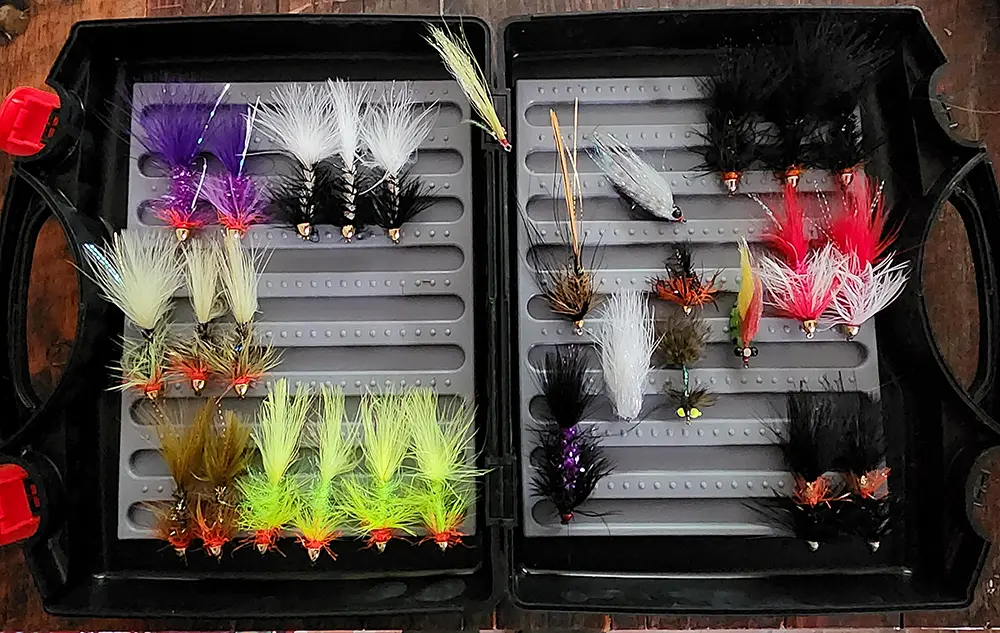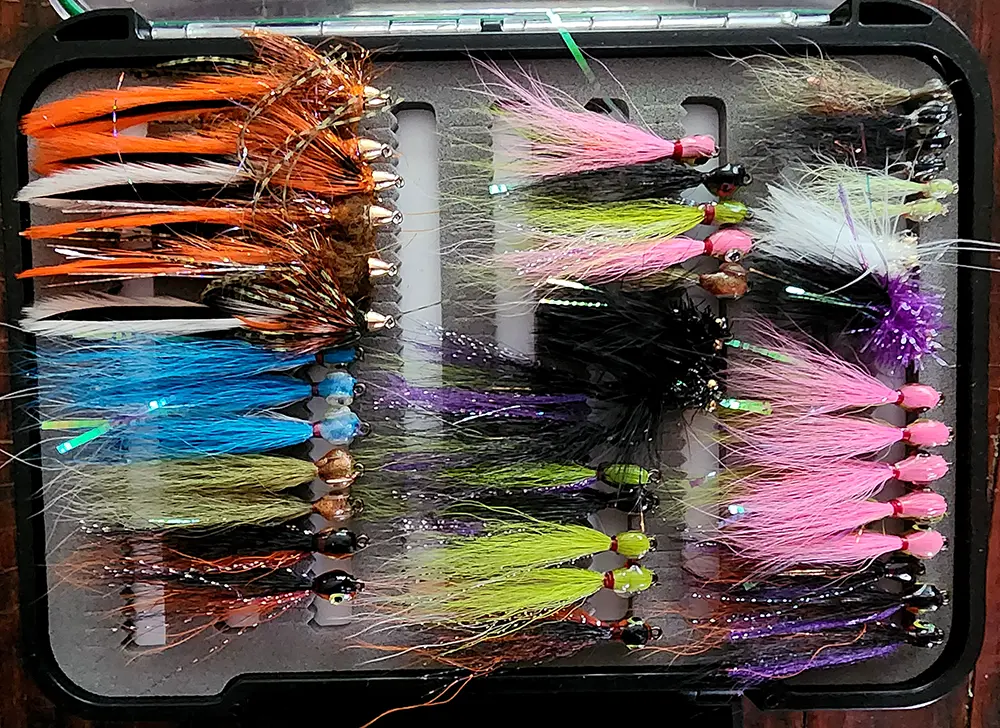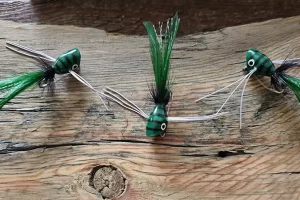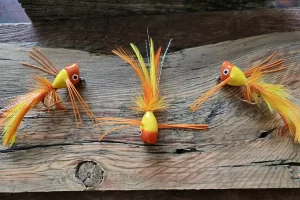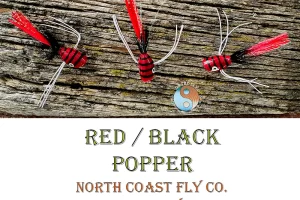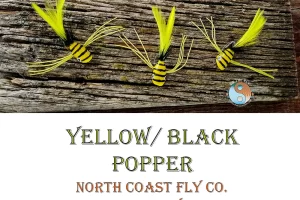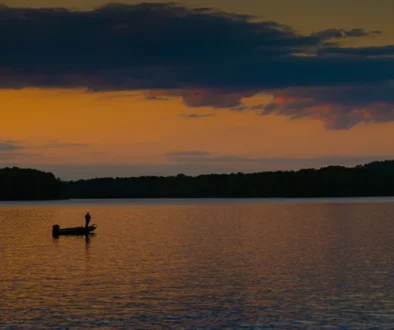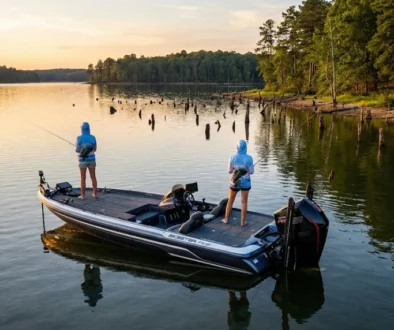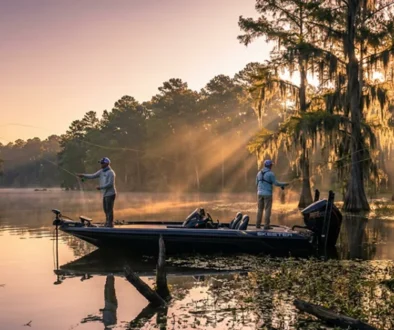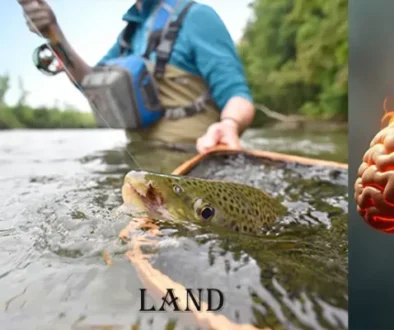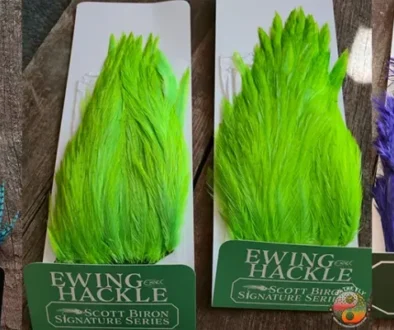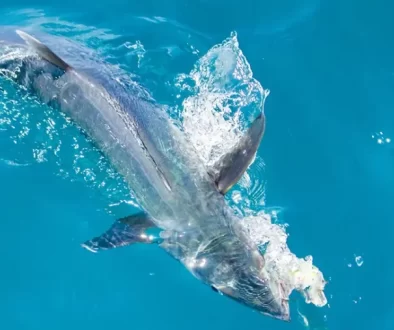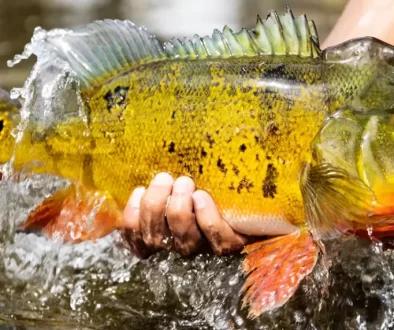How to Start Fly Fishing for Bass: A Comprehensive Guide
Imagine this. You’re standing knee-deep in a cool, flowing river, or your favor lake in the boat or float tube. Your fly rod rhythmically gliding through the air back and forth against the azure sky. It’s that golden hour when the world seems to slow down just a bit, as you make one more cast into the inviting water. Now is as good a time as any to learn How to Start Fly Fishing for Bass.
Suddenly – there’s a tug! The line tightens; heart pounding with excitement, it’s game on! Welcome to bass fly fishing.
You see, knowing how to start fly fishing for bass, is like being let into an exclusive club. One where precision meets patience and where each cast could lead to that adrenaline-filled moment of catching a lively largemouth or smallmouth bass.
This guide isn’t just a how-to. Nope! It’s packed with practical tips and fun nuggets like getting the scoop on what flies really dig.
Table of Contents
Understanding the Basics of Fly Fishing for Bass
Fly fishing for bass can be a thrilling experience, particularly if you’re familiar with the basics. This sport combines elements of strategy, skill, and understanding of both your gear and species —bass in this case.
You may ask why fly fishing is an exciting freshwater activity? The answer lies within its primary protagonists – smallmouth and largemouth bass. They are known to put up quite a fight making every catch rewarding.
The ABCs: Know Your Fish
Bass live across various water bodies in America’s, and Europe; from rivers to ponds to lakes. But they aren’t all found in similar spots or conditions. For instance, largemouth bass often prefer shallow waters filled with weeds while their smallmouth counterparts tend to reside in cooler deeper lakes. Therefore, knowing where these fighters hang out will increase your success.
Beyond just habitat preferences though is recognizing that each species requires different strategies when it comes to fly choice. Now let’s dive into those details.
A Guide on Gear: What You Need
While your trout fly rod might work fine for some anglers targeting bass, nothing beats using a heavier weight rod fly rods designed specifically for the job at hand.
Your fly rod weight ought to ideally sit between 6-8wt coupled with an large arbor sealed adjustable drag fly reel. This will help you effectively play bass once they are hooked and bring them in smoothly for a quick release. In how to start fly fishing for bass.
Choosing the Right Fly
Akin to selecting a bait for traditional fishing, fly choice is paramount. In fact, it’s where the real fun begins. The size of your fly can vary depending on whether you’re targeting smallmouth or largemouth bass. But as a general rule: bigger is better when dealing with these beasts. But not always. Times in shallow water along a bank still water bank small can be the thing to turn them on.
Think about using big flies that mimic nearby prey like frogs or even tinier baitfish. These so-called “bass bugs” Fly Selection is very broad with foam patterns by Skip Morris and spun Deer Hair by Jeff Rowley. There is a plethora of patterns and great tyers. Crayfish patterns will be talked about as we go along here. They are also a great trout pattern.
Understanding Bass Behavior and Habitat
If you’re keen on fly fishing for bass, it’s crucial to get a grip on their behavior and preferred habitats. Bass are far from your average Joe in the fish world; they’ve got quirks. For starters, largemouth bass have an affinity for shallow water filled with weed and lily pads.
They love lounging around fallen trees or chilling near submerged structures where smaller prey tend to hang out. It’s like having their favorite sushi bar right at their doorstep.
Fly Fishing for Largemouth Bass, suggests that these larger cousins of smallmouth bass favor warmer waters. So if you’re angling (pun intended.) to catch one of them big boys, keep an eye out for such environments.
Largemouth Vs Smallmouth: A Tale Of Two Habitats
Their little brothers, smallmouth bass, march -or should I say swim- to a different tune altogether. They prefer deeper and cooler water bodies which offer plenty of room to flex those fins. You’ll often find them loitering around rock formations or sandy bottoms waiting eagerly for food items swept by currents.
You can think of this as equivalent human behavior’s; while some people like bustling city life (largemouth), others thrive in peaceful countryside settings (smallmouth). Remember folks; diversity is not just a land-based phenomenon.
The Charming Habits Of Our Finned Friends
Beyond habitat preferences though lies another interesting facet about our finned friends – they are highly opportunistic predators who feed based on availability rather than sticking strictly to dietary preferences. One day it might be a delicious crayfish, another day they could fancy a juicy frog.
Understanding this feeding behavior is key to selecting the right flies and timing your fishing expedition for maximum success. The world of bass fly fishing offers plenty of room for experimenting with different bait types and sizes, adding an exciting dimension to your angling adventures.
Poppers for Bass Fishing & More
- Green Black Striped Popper
- Yellow-Red Bass Popper
- Red Black Striped Bass Popper
- Yellow Black Striped Bass Popper
Unlock the Secrets of Popper Fishing: A Guide to Catching Bass on the Fly
Poppers are a game-changer for bass fly fishing, offering an exciting and effective way to target bass on the surface. These topwater flies create irresistible commotion, mimicking the movements of frogs, insects, or baitfish, which bass can’t resist. Mastering the use of poppers can lead to explosive strikes and unforgettable fishing experiences. In this guide, we’ll cover everything you need to know about using poppers for bass fly fishing, from choosing the right popper to perfecting your technique.
What Are Poppers?
Poppers are surface flies designed with a concave or flat face that creates a popping or splashing sound when retrieved. This action imitates the movement of prey on the water’s surface, triggering aggressive strikes from bass. Typically made from foam, cork, or balsa wood, poppers are painted in bright colors like chartreuse, white, or black to attract attention in various water conditions.
Choosing the Right Popper
Selecting the right popper is crucial for success:
-
Size: Match the size to the bass you’re targeting. For smallmouth bass, use smaller poppers (size 6-8). For largemouth bass, go bigger (size 4-3/0).
-
Color: Bright colors like yellow or chartreuse work well in murky water, while natural tones like green or brown are ideal for clear water.
-
Material: Foam poppers are durable and float well, while balsa wood offers a more subtle action.
Popular popper patterns include the Deer Hair Popper, and Swimming Frog, as well as gurglers. View Popper Options Here!
Gear and Setup
To get the most out of popper fishing:
-
Fly Rod: Use a 6-8 weight rod for better control and to handle larger flies.
-
Fly Line: A weight-forward floating line is ideal for casting poppers and maintaining surface action.
-
Leader: A short, stout leader (6-7.5 feet, 10-15 lb test) helps turn over the popper and handle aggressive strikes.
-
Knot: Tie the popper using a loop knot (like the Non-Slip Mono Loop) for better movement and action.
Techniques for Using Poppers
Mastering your retrieve is key to enticing bass:
-
Steady Retrieve: Pull the popper in a consistent rhythm to create a steady popping sound.
-
Pop-and-Pause: Give the popper a sharp tug, then let it sit. This mimics a wounded baitfish and often triggers strikes during the pause.
-
Erratic Retrieve: Mix short, quick pops with longer pauses to imitate panicked prey.
Experiment with these techniques based on the bass’s behavior and water conditions. In calm water, subtle pops work best, while in choppy water, louder, more aggressive pops are needed.
Where and When to Use Poppers
Timing and location are critical:
-
Time of Day: Early morning and late evening are prime times for popper fishing, as bass are more active near the surface.
-
Season: Spring and summer are ideal, especially during spawning or when bass are feeding on surface prey.
-
Locations: Target areas with structure like weed beds, lily pads, fallen trees, or rocky points. Bass often lurk near cover, waiting to ambush prey.
Tips and Tricks
-
Add a Trailer Hook: For short strikes, consider adding a trailer hook to increase your hookup rate.
-
Use a Loop Knot: This allows the popper to move more freely, enhancing its action.
-
Stay Stealthy: Approach fishing spots quietly to avoid spooking bass, especially in shallow water.
-
Watch for Subtle Takes: Sometimes bass sip poppers quietly, so stay alert even if there’s no explosive strike.
Conclusion
Poppers are a must-have in any bass fly fisher’s arsenal. By choosing the right popper, perfecting your retrieve, and targeting the best locations, you’ll increase your chances of landing trophy bass. So grab your fly rod, tie on a popper, and experience the thrill of topwater bass fishing!
Techniques for Catching Bass Fly Fishing
Catching bass with a fly rod isn’t just about the thrill of landing a big one. It’s an art, it’s finesse, and it requires technique.
The Right Leader Length Matters
Bass aren’t leader shy like some trout can be. That said, you need to consider your leader length when fishing for these freshwater brutes. Leaders ranging from 7-9′ are typically ideal for topwater fly fishing. I have been using Snowbee Camo Tippet for topwater. Whereas shorter leaders around 4-8′ of XS Gold Fluorocarbon work best for baitfish patterns.
This is because the right length helps keep your fly in the strike zone longer, increasing chances of catching fish.
Understand Your Floating Fly Technique
Floating flies often produce exciting surface strikes that’ll get your heart racing. The trick here is not to jerk away too quickly on seeing or hearing the splash – sometimes bass miss their first attempt but come back seconds later if they see prey still “struggling”. Be patient.
A Pound Tippet Can Make All The Difference
Tippets might seem like tiny insignificant pieces of gear until you hook onto a monster bass. These beasts pull hard and won’t give up without a fight; hence using strong tippets around 12-pound test could be game changers (pun intended.). This would let you play out even large aggressive bass effectively without breaking off mid-fight.
Vary Depending On Conditions And Fish Behavior
Sometimes successful angling needs us to think more like our quarry than ourselves. Consider factors like water temperature, time of day, or the season to determine what flies you should be using. For instance, bass typically are more active in cooler temperatures and will strike at large surface patterns. However during warmer parts of the day when they tend to go deeper, sinking flies might work better.
Are You A Scientific Angler And The Art Of Casting

Most of the time I prefer to tie my own bass flies. Gurgler style mouse patterns and crawfish are some of my favorites. I use Tidewater fly foam, we stock 69 different colors and its all mottled. One must not forget to have a few woolly buggers on hand. They tend to save the day.
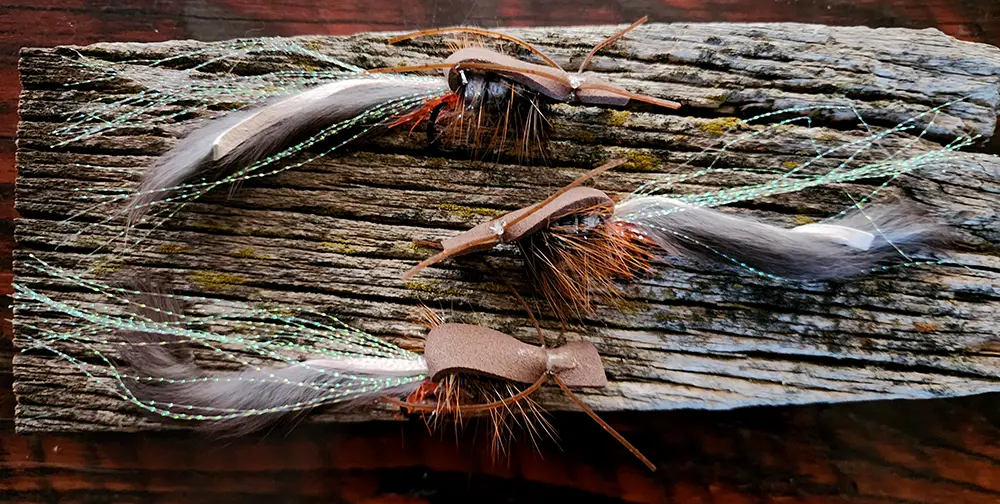
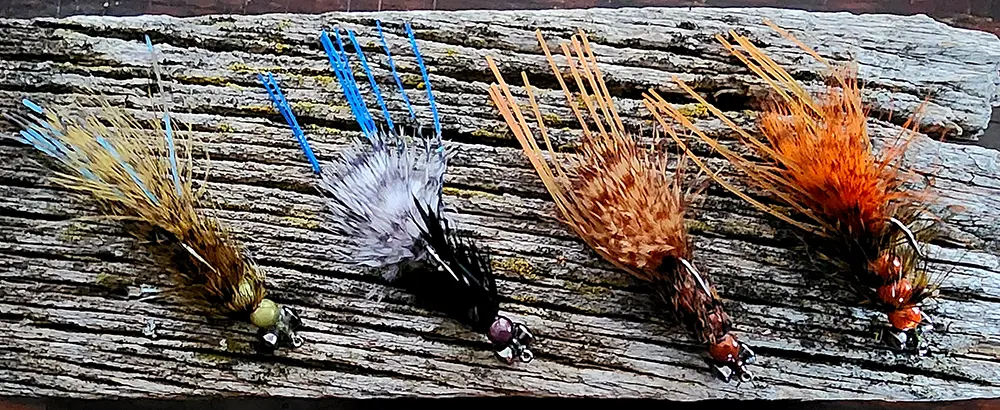
Factors Affecting Bass Fly Fishing Success
When you’re fly fishing for bass, there’s a symphony of factors that can influence your success. It’s like trying to hit all the right notes in an improvised jazz solo – unpredictable but thrilling.
The Role of Weather Conditions
A common belief among anglers is that bass are more active and likely to bite on cloudy days. However, just as with any rule, exceptions abound. Yes, overcast skies might provide better conditions because it reduces light penetration into the water which tends to make bass less cautious and more willing to strike at flies.
But let’s not discount sunny days. The sun brings warmth, stirring up underwater life and getting our finned friends moving about for food. Bass are opportunistic feeders, they’ll often have reactionary strikes if something tempting comes their way – regardless of whether Mr. Sun has his hat on or not.
Moon Phases: Are You Lunatic About Lunar Cycles?
Surely moon phases can’t affect my fly fishing results? Think again. Some studies suggest that bass feed more actively during certain moon phases. On the Water explains how bass typically are more active during a full or new moon, due to increased tides and water movement.
The fascinating world of fishing constantly reminds us there’s always something new to learn. You might start planning your trips based on lunar cycles after reading this.
Water Temperature: Finding The Goldilocks Zone
Ever been in a situation where the zone is elusive. You’ve spent the last couple of hours switching flies and lines spools.
Breezy Days: Curse or Blessing?
You might curse windy days when casting your line becomes harder than convincing a cat to take a bath. But hold onto your hats folks because wind actually helps disperse baitfish scents through the water column faster, making feeding time akin to ringing the dinner bell for those hungry bass down below.
In essence, windy days increase chances of catching fish. Just remember this next time you find yourself battling gusts on the lake; it could be a blessing in disguise. On these days I like to fish the shoreline the wind is pushing the water against. The wind is also pushing in food!
To stalk and bass fish on these days performance outdoor apparel is a must as well.



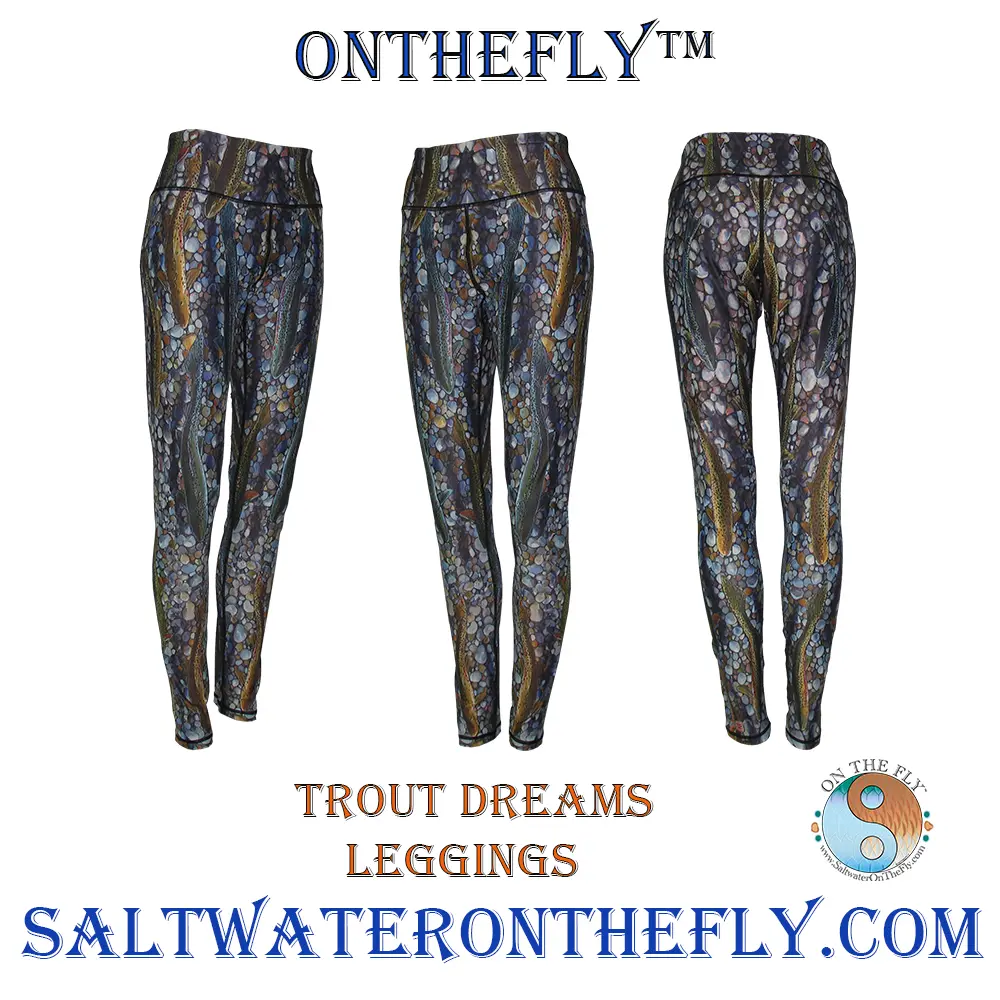
Tips for Fly Fishing for Bass in Different Environments
Let’s explore the wild world of bass fly fishing. No two bodies of water are identical, so adaptability is key. Whether you’re on a shallow warm water creek or exploring deeper lakes, knowing how to tweak your tactics can make all the difference.
Fishing Warm Water Bodies
Bass love warmer waters, which often means shallow areas with plenty of vegetation and fallen trees. These structures provide food and shelter for smaller fish, making them prime hunting grounds for our bass friends.
A larger rod weight will give you better control when casting around these obstacles while a large arbor reel with an adjustable drag system allows quick line retrieval – essential if a big largemouth decides to run towards structure after being hooked.
Casting into Deeper Lakes
In contrast to their shallower counterparts, deeper lakes present unique challenges but also exciting freshwater opportunities. Smallmouth bass typically hang out here because they prefer cooler temperatures than largemouths do.
You might want to use sinking flies that get down fast where smallmouths live. Crayfish patterns like Wooly Buggers work excellent in this scenario as they imitate one of smallies’ favorite snacks. Or my favorite is Krueger’s Madi-Craw. This fly works well on rocky mountain rivers where crawdads are present.
Navigating River Currents
Rivers offer dynamic environments with currents that can both aid and hinder your fly fishing efforts. Bass use the current to their advantage, so it’s only fair we do too.
As a general rule, try to position yourself downstream of where you believe bass are holding. This will allow your fly choice (like Game Changers or big deer hair flies) to drift naturally into the feeding zone. There is always a but. I personally prefer approaching from up stream and swinging into a hole or riprap. Working a baitfish pattern, though on the surface have found mice and frog patterns to work.
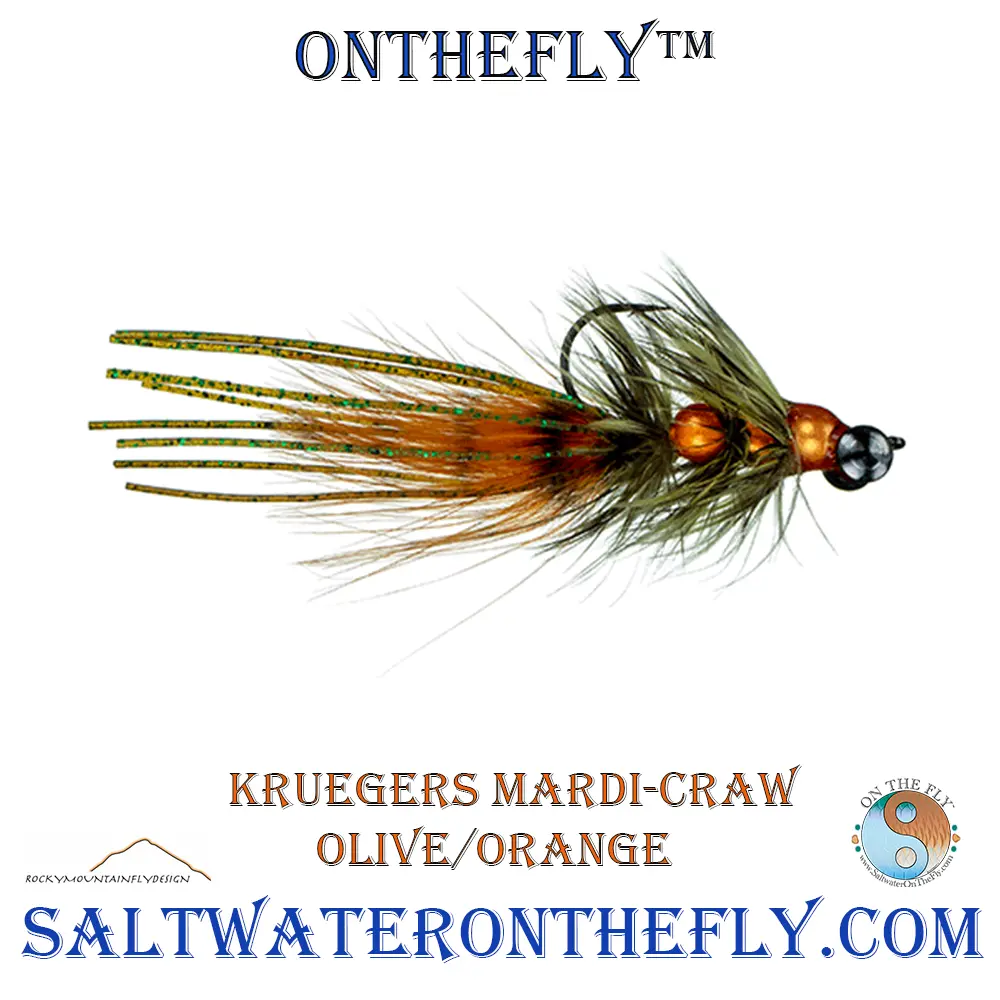
Fishing in Different Seasons
Bass habits change with the seasons, so tweaking your approach is crucial for successful fishing. Come springtime, as water temperatures go up, bass migrate to shallower areas for spawning.
Techniques for Fly Fishing for Bass in Saltwater
Fly fishing for bass in saltwater is a thrilling challenge. It combines the ruggedness of oceanic conditions with the subtlety and finesse required by fly angling. Don’t fret, we’ll help you traverse these briny depths.
The Importance of Gear Selection
Getting your gear right is crucial when tackling saltwater fly fishing. The ideal setup includes a fast action rod capable of handling big flies and an adjustable drag reel that lets you fight feisty bass without snapping your line. Remember, 6-8wt weight rods are typically used for this kind of game. Saltwater on the fly suggests such rods as they provide sufficient backbone to play bass effectively while being light enough not to tire out the angler.
Selecting Suitable Flies
Choosing effective flies can make or break your success on water – be it freshwater or saltwater environments. While some folks swear by smaller flies like Wooly Bugger, others prefer large flies imitating baitfish patterns such as Clouser minnows. Frog imitation foam poppers work excellent too. So, experiment with different options until you find what works best where you fish.
Tailoring Techniques According To Conditions
Your technique will vary depending on factors like tide times and weather conditions; both have significant impacts on fish behavior. For instance, windy days can stir up the water, creating perfect conditions for stripping large flies in deeper areas. On a calm day, however, you might find more success presenting smaller flies delicately on shallow flats.
Understanding Bass Behavior
Bass behavior differs greatly between freshwater and saltwater environments. Typically, bass are opportunistic feeders with reactionary strikes; this holds true even in salty options where they face different prey types and competitors.
FAQs on How to Start Fly Fishing for Bass
What is the best fly fishing setup for bass?
A 9′ fast action 6-8wt weight rod paired with an adjustable drag reel having a large arbor works wonders. Don’t forget your fluorocarbon leader and sinking lines.
Is fly fishing for bass hard?
Fly fishing can be challenging, but it’s not overly tough. Practice casting, learn about different flies and understand bass behavior to up your game.
When should I fly fish for bass?
Bass are active feeders early morning or late evening during warmer months. However, they will bite throughout the day if conditions are right.
Can you catch bass while fly fishing?
Absolutely. With suitable gear, knowledge of their habitat and behaviors along with effective techniques – you’ll have a blast reeling in both smallmouth and largemouth varieties.
Conclusion of How to Start Fly Fishing for Bass
So, you’ve taken the plunge into the exciting world of bass fly fishing. You now know how to start fly fishing for bass, from understanding their behavior and habitats to selecting your gear.
You’re armed with tips on choosing effective flies, adapting techniques depending on weather conditions or environments, and even taking on saltwater challenges. All these insights are designed to give you a solid foundation in this sport.
Your takeaway? The right equipment matters – fast action rods, adjustable drag reels and well-chosen flies can make all the difference. Yet remember it’s not just about what’s in your tackle box but how you use it.
Finally – patience is key! Fly fishing requires time spent studying waterways, perfecting casts and waiting for that bite. Happy stalking! And learn more about fly fishing for bass in Alabama Bass Fly Fishing, Oklahoma Bass Fly Fishing or even Ohio Bass Fly Fishing.

